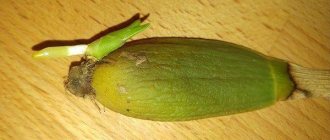When a store sells indoor orchids at a price 2-3 times lower than usual or friends offer to pick up a drying plant for free, it’s hard to resist. Even if the orchid’s leaves turn yellow and begin to dry, and the roots turn brown, such a plant can be saved. You just need to transplant it correctly. Indoor orchids are rather capricious plants. This is due to the fact that their homeland is a tropical jungle. It is quite difficult to maintain a regime suitable for a flower in indoor conditions.
Improper care can lead to the fact that within a few weeks you will have to think about how to revive the orchid from the consequences. Very often, orchids begin to have difficulties with roots. Don't be discouraged. A withered plant, even with rotten roots, can be revived. In order to understand how to resurrect a dying plant, you need to understand the factors of the problems. Often, improper care is to blame for the roots rotting. Orchid loves diffused light. Very often, difficulties with the root system of orchids begin in the autumn-winter period. Therefore, from September to March you need to take extremely close care of the plants. In the warm season, actively growing, flowering orchids feel comfortable in natural conditions, easily tolerating the lack of lighting, heating and additional air humidification. What is the reason that orchids die at home, and how to save a beautiful flower?
Latest articles about gardening
Pickling cabbage in February 2022 according to the lunar calendar
How to treat pepper seeds with hydrogen peroxide before planting seedlings?
Treating pepper seeds with potassium permanganate before planting seedlings
How to understand that something is wrong with an orchid?
The orchid will definitely give you warning signals and, first of all, these will be:
§ dried and withering leaves;
§ poor growth.
In this case, only immediate replacement of conditions and resuscitation can help and give the flower a second life. The first thing to do before resuscitating an orchid is to check the roots. Ideally, the shoots should be light in color. On top they are covered with a greenish substance - velamen. The shell performs several functions. Protects the thin, long root from various damages and is involved in “feeding” the plant. Small appendages are visible to the naked eye. They are the ones who absorb water from the substrate.
Sunstroke: first aid
Orchids are heat-loving, because they come from the tropics. This fact cannot be ignored, but a big mistake is to leave the flower in direct sunlight , near a heating radiator, or place it under a stream of scorching air from an air conditioner. A couple of hours of such sunny and warm baths are enough to cause trouble! The distress signal will come immediately: the flowers will fall, the leaves will shrivel!
What to do:
- Move the orchid away from the source of the problem.
- Water after 2 hours.
- After another hour, spray the plant.
- Follow the correct watering schedule.
Let there be light! Orchids need a lot of indirect light. With a lack of light, the leaves stretch out, become dull, and the flowers die.
Normal daylight hours average 12 hours. Young specimens require 16-18 hours of daylight. If there is too little light, simple devices will help: fluorescent lamps
Fluorescent lamps are suitable for additional lighting . The minimum distance from the leaves is 5-7 cm! If there are too many lamps, beware of overheating and sudden temperature changes when turning on and off.
Why do orchid leaves turn yellow?
Yellowing and drying of orchid leaves can be caused by various reasons. Usually this is a violation of the conditions of maintenance when the leaves fall off due to the death of the roots.
First of all, check the condition of the root system - it is very easy to distinguish living roots from dead ones in orchids. The roots of the orchid have rotted, if they have turned brown, lost their elasticity, and have crumpled, soaked areas. Viable orchid roots should be light in color (usually green
If your orchid's leaves have turned yellow, flabby, and limp, it may have suffered from overheating. Where is the pot with your plant? If it is on a windowsill, next to a window that is not covered with blinds or curtains, or in close proximity to a central heating radiator, then it is likely that the plant is sick from excessive heat. Note that the leaves will not recover immediately, but after three to four days with proper care. To avoid repeated overheating, change the location of the flower pot. Remember that the orchid does not like scorching sunlight, so it is better to shade it or place it some distance from the window.
An orchid can be saved, even if it is left with almost no roots. To do this, you need to replant it, first removing dead leaves and roots.
The main causes of drying out
If your home flower suddenly begins to dry out, first of all you need to highlight the most common reasons why this happens. In general, there are two of them: an invasion of parasites or illiterate care. In the first case, it is necessary to spray the plant with insecticides in time. At the same time, reconsider the features of caring for your indoor plant.
If you do not adhere to the rules of irrigating the substrate, saturating it with fertilizers, or if it does not have enough lighting, it is not surprising that the orchid began to actively dry out.
How to save an orchid - method 1
If the orchid has enough living roots left, then after cleaning the root system it can be planted in a small pot filled with substrate. Since weakened roots will not allow the orchid to gain a sufficient foothold in the pot, it needs to be further strengthened at first. Like all patients, the injured orchid needs to be provided with gentle conditions: place it in a well-lit place, but protected from direct sunlight, and ensure proper drinking conditions. It should be remembered that weakened roots will not be able to fully absorb moisture from the substrate, so you need to water the orchid very carefully, slightly moistening the substrate with a spray bottle. Bottom watering of the orchid, when water is poured into a saucer in which the pot stands, gives excellent results in restoring the root system.
We recommend reading our other articles
Planting seedlings in boiling water
How to plant carrots without thinning? Video
Caring for raspberries in spring pruning video
Pruning grapes in spring for beginners scheme
Care
In order for the plant to delight you with its flowering as often as possible, proper care of the orchid after flowering is necessary.
After the flowers have fallen, you need to trim the peduncle - it must be dry. This is done to ensure that the process of new flowering of the orchid occurs as quickly as possible.
If the dried peduncle is not cut off, the plant will begin to lose its strength in attempts to resume flowering on the dead organ.
Next, you need to provide the orchid with peace. To do this, transfer the flower to a cool, bright room. The air temperature should not exceed 20 degrees Celsius. The time spent in rest mode varies from two to four months.
Don't forget about watering and spraying. Fertilizers should not be applied during this period. Complete rest is the key to successful flowering. As soon as young shoots appear, the plant is returned to its usual habitat.
How to save an orchid - method 2
If the orchid has no living roots left at all, then it is best to revive it with the help of a greenhouse. To do this, a layer of drainage - expanded clay - is poured into a spacious container, on top of which a layer of moss is placed. It is better to buy moss at a flower shop, as wild moss can be infected with parasites and pests. The damaged orchid is placed on top of the moss, covered with a plastic or glass cap, and conditions of high humidity and temperature are created in the greenhouse. After 10-14 days, the first roots will appear on the orchid. When the roots reach 3-4 cm, it can be planted in a regular substrate.
Shock
A change of habitat always causes stress for the plant. This is similar to acclimatization in humans.
New living conditions, a different level of humidity in the room, a different temperature regime - all this is a real shock for the orchid. The plant reacts to such innovations by shedding buds and flowers. This is absolutely normal. Any living creature needs time to adapt, and an orchid is no exception.
How to save an orchid - method 3
You can revive an orchid using ordinary water. To do this, it is placed in a container of water so that only the very tip of its lower part touches the water. After 12 hours, the water is drained, and after another 12 hours, it is poured again. The air temperature should be at least +25° C. The appearance of roots with this method should be expected after 6-10 weeks, but sometimes this period can extend up to six months.
We recommend reading our other articles
Seedlings in snails and diapers Yuliya Minyaeva leeks
Peach pruning in spring video for beginners
How to feed an orchid at home? How to feed an orchid at home? home conditions?
How to make a flower stand with your own hands
Humidity: optimal value
Lack of moisture or its excess is the most common cause of problems . An acute lack of moisture occurs if watering is stopped for some reason. In this case, resuscitation cannot be avoided!
Instructions for this case:
- Pour water at room temperature into the basin to a level of no more than 15-20 cm.
- Immerse in a basin of water and wait until the earthen lump becomes limp.
- Please note that the leaves must be dry when immersed in the basin!
- If the earthen ball is too limp, it is necessary to place the patient in a new pot.
Keeping it too wet creates another serious problem: the phalaenopsis begins to rot. Affected by rot, the flower loses its foliage, the leaves become soft, and the flowers fall off.
Rotting is always easier to prevent than to treat. If 90% of the plant is infected, it will die!
It is important to take timely measures and eliminate the causes of rot:
Remove the flower from the pot.- Rinse the roots under warm running water.
- Remove damaged roots and leaves.
- Remove wilted flowers.
- Treat the sections with an antiseptic.
- Leave to dry overnight.
- Replant the orchid in new soil with a drainage layer.
- Water only after the soil has dried.
Antiseptics for orchids: Fundazol, Fitosporin . Treatment of wounds against rot: Chlorhexidine. After reading such detailed instructions, the question remains: how to properly water an orchid?
Using growth regulators when caring for an orchid
Experienced gardeners recommend using growth regulators that help strengthen the plant’s immune system. The most commonly used are “Epin” (or otherwise “Epin-Extra”), as well as “Zircon”. These drugs help the orchid regain its strength. Epin should be diluted in a dosage of 1 liter - 1 drop. You can soak the plant in this solution for 20 minutes to 2 hours. But remember that growth regulators themselves are not a magic panacea for all orchid diseases. In order for the plant to feel good, it is necessary to create favorable growing conditions for it, including maintaining high air humidity and sufficient lighting in the room. We hope you now know how to revive a phalaenopsis orchid. Care for the plant wisely, observing all agrotechnical growing rules, avoiding overwatering, hypothermia or overheating.
Proper watering
“It’s also science for me to water flowers from a watering can!” - the novice florist will exclaim. But experienced plant growers know that watering is an art. The quality of water, composition and temperature determine the well-being of the orchid. Tap water is not suitable due to the presence of heavy metals.
To water orchids, use soft, purified water.
The accepted practice of settling water for watering plants is not suitable in the case of a strange pet . To purify the liquid, use a filter, a distiller, boil and cool.
If it is not possible to boil or filter, acidification will help reduce the concentration of unnecessary calcium impurities. Apply oxalic acid following the instructions on the drug.
A competent schedule for watering orchids helps to avoid problems with waterlogging and drying out of the earthen clod. Note that the schedule depends on the time of year, temperature and humidity in the room and the life cycle of the plant.
During the active growing season, water the plants 2-3 times a week . During flowering, watering is increased. The principle of watering is simple: make sure that the soil substrate does not dry out or become waterlogged. In winter, watering is reduced, but spraying is not stopped.
How to water:
- using a watering can;
- immersion in the pelvis;
- shower;
- copious spraying.
How much water is needed for irrigation? Water until moisture begins to seep out of the holes in the bottom of the planter . The best time to water is early morning. Remember that proper watering will help avoid difficulties caused by waterlogging and drying out.
We offer a video about proper watering of an orchid:
Danger to the plant
Orchids do not adapt well to unfavorable conditions . Drying flowers may be the first sign that the plant urgently needs help.
If you ignore the alarming symptoms, the orchid may not only stop blooming, but also die.
By creating the right conditions, you can enjoy orchid blooms almost all year round.
What are we talking about?
A plant, like a person, is dependent on many external factors. If there is enough of everything, the plant has a healthy and blooming appearance, but in cramped conditions it will survive. The answer to the question why an orchid that forms quite naturally suddenly turns yellow and its unopened buds dry out is undeniable - it has gone into survival mode.
ATTENTION: When dropping the buds, the plant is freed from unnecessary ballast and gives an obvious sign for help. By identifying the problem in a timely manner, it is possible to stop the subsequent wilting of the peduncle and avoid similar problems in the future.
Has the stem started to dry out?
Strange as it may sound, but drying out the stem, or rather the peduncle, of the orchid is the best option
for its continued existence.
In the traditional sense, any dying flower or branch must be pruned so that the dying part does not drain the strength from the plant. However, in our case , the trick is that with an orchid it’s the other way around.
Until its peduncle dries up and turns black
, you don’t need to touch it at all, because the orchid will little by little pull all the useful substances accumulated in it from the drying stem. Of course, from an aesthetic point of view it does not look very beautiful, but be patient and leave the flower alone.
The more “benefits” an orchid extracts from a peduncle, the greater the likelihood of its harmonious development and rapid flowering in the future.
.
As soon as the peduncle dries completely, you can safely trim it.
What to do if the orchid's roots begin to dry? Find out about the causes of drying out and how to revive it in this
Selection of capacity
When choosing a pot for an orchid, you must follow a number of important rules and principles. Firstly, it must provide ventilation for the root system. Therefore, it is best to purchase a specialized container for orchids, which has small holes. Thanks to them, complete drainage of water from the rhizome is ensured.
Secondly, the pot must provide the flower with sufficient lighting. The best option would be a completely transparent copy.
Thirdly, the material from which the pot is made should not be heated or cooled. The ideal option in this case is plastic. The size of the pot is no less important; it should not be too loose.
Experienced gardeners use ceramic containers in their arsenal. Their main advantage is high air and moisture permeability and protection of the rhizome from overheating. However, a ceramic pot has an extremely unpleasant drawback - the roots of plants stick to the inner wall during long-term use, which can result in injury to the flower during replanting.
A glass pot is a very good option that provides the plant with the necessary amount of light. A significant drawback is the lack of drainage holes. Such products are not suitable for ordinary people, since you need to know the exact amount of water required for irrigation. And this task is only feasible for professionals.
Prevention of secondary occurrence of the problem
After the flowers have completely fallen off, the soil should dry thoroughly. It is preferable to transplant the plant into a different soil, first removing all dead, rotten roots.
If an orchid has dropped all its flowers due to high temperature, then it must be immediately removed from the room or from the windowsill. Spraying or shading cannot protect against significant temperatures .
To prevent the orchid from dropping flowers in the future, it must be moved to the back of the room, and if the place is bright, then perhaps directly to the floor.
IMPORTANT: If the room has air conditioning, the plant must be immediately removed from the cool air flow.
And finally, in all seasons, in addition to summer, for the orchid to flourish effectively, an acceptable daylight hours must be created. Its minimum duration is 12 hours. For this reason, if all the flower stalks have fallen off, try to prevent this phenomenon in the future by providing the orchid with the right amount of light.
If you properly care for an orchid, it can bloom continuously for a long period. This plant contains so many different species and configurations that its diversity has won the hearts of gardeners around the globe. However, the attitude towards it must be appropriate.











